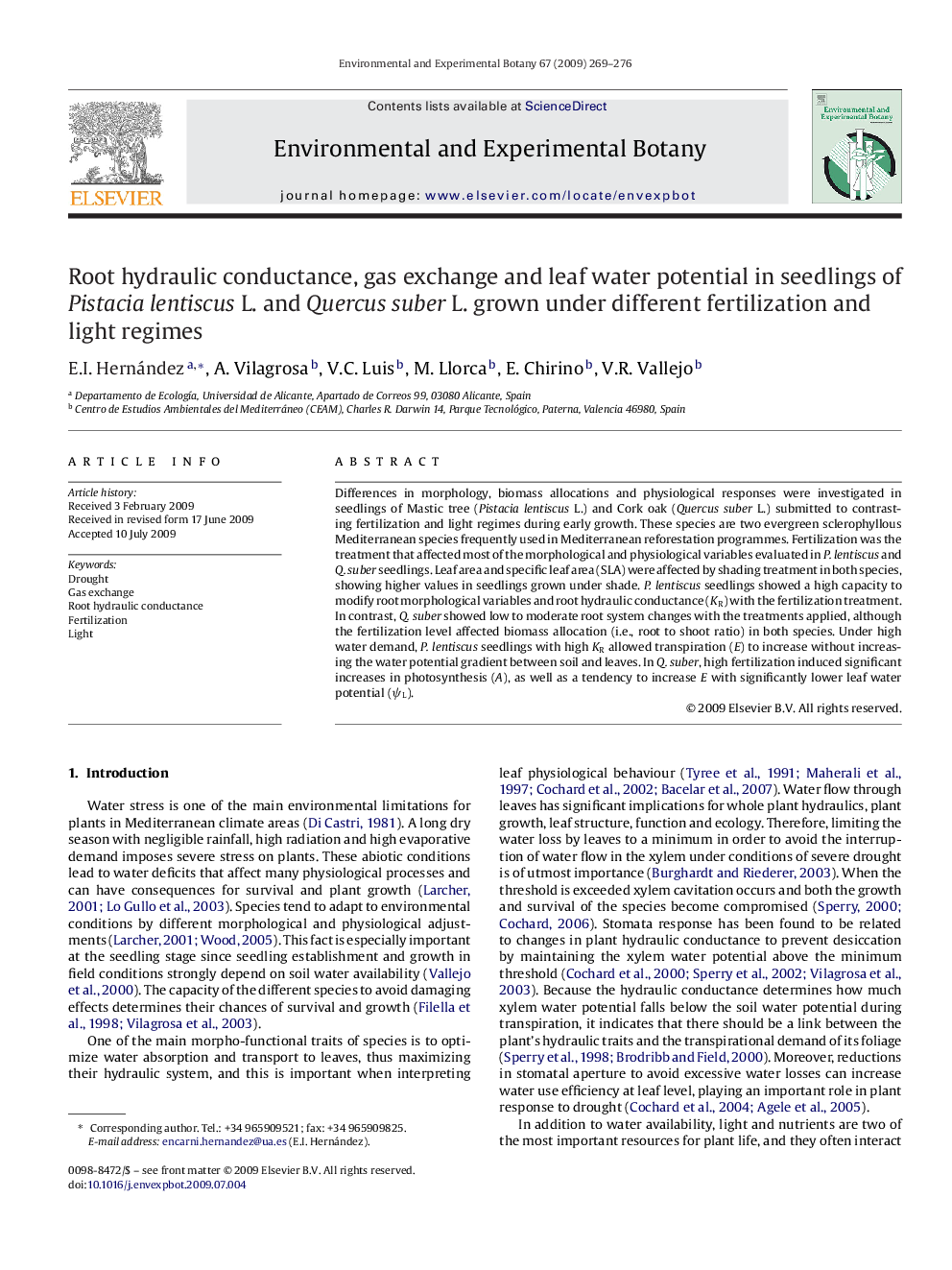| Article ID | Journal | Published Year | Pages | File Type |
|---|---|---|---|---|
| 4555060 | Environmental and Experimental Botany | 2009 | 8 Pages |
Differences in morphology, biomass allocations and physiological responses were investigated in seedlings of Mastic tree (Pistacia lentiscus L.) and Cork oak (Quercus suber L.) submitted to contrasting fertilization and light regimes during early growth. These species are two evergreen sclerophyllous Mediterranean species frequently used in Mediterranean reforestation programmes. Fertilization was the treatment that affected most of the morphological and physiological variables evaluated in P. lentiscus and Q. suber seedlings. Leaf area and specific leaf area (SLA) were affected by shading treatment in both species, showing higher values in seedlings grown under shade. P. lentiscus seedlings showed a high capacity to modify root morphological variables and root hydraulic conductance (KR) with the fertilization treatment. In contrast, Q. suber showed low to moderate root system changes with the treatments applied, although the fertilization level affected biomass allocation (i.e., root to shoot ratio) in both species. Under high water demand, P. lentiscus seedlings with high KR allowed transpiration (E) to increase without increasing the water potential gradient between soil and leaves. In Q. suber, high fertilization induced significant increases in photosynthesis (A), as well as a tendency to increase E with significantly lower leaf water potential (ψL).
